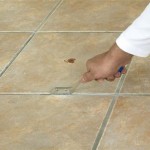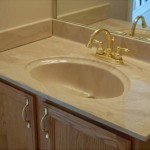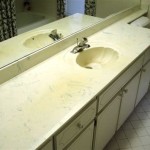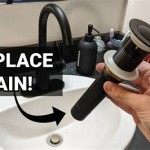A Loose Faucet on Your Bathroom Sink: Troubleshooting and Repair
A loose faucet on a bathroom sink can be a source of annoyance, causing dripping, leaking, and instability. This issue can stem from various factors, ranging from loose fittings to worn-out components. Fortunately, addressing a loose faucet often involves straightforward repairs that can be tackled by most homeowners. This article will guide you through the common causes of loose faucets and detail the steps for troubleshooting and repairing the issue.
Identifying the Cause
The first step in addressing a loose faucet is to determine the source of the problem. This can be done through careful observation and a little detective work. Here are some common causes to consider:
- Loose Fittings: The most frequent cause of a loose faucet is simply loose fittings. The faucet's handle, spout, or base may have become loose over time due to normal wear and tear or excessive force.
- Worn-Out Gaskets or O-Rings: The gaskets and O-rings within a faucet are designed to create a seal between moving parts to prevent leaks. If these components become damaged or worn, they can lead to a loose feeling and leaks.
- Damaged Faucet Cartridge: The faucet cartridge is a crucial part responsible for controlling water flow and temperature. Damage to the cartridge can lead to leaks, loose handles, or even malfunctioning valves.
- Improper Installation: Sometimes, a loose faucet is a result of improper installation during the initial setup. This can occur if the faucet was not tightened securely or if the wrong size or type of fittings were used.
- Corrosion: Corrosion can occur within the faucet's internal components due to exposure to water and minerals. Corrosion can weaken metal parts and lead to instability or leaks.
Troubleshooting and Repair
Once you have identified the potential cause of the loose faucet, you can begin the troubleshooting and repair process. Here are some steps to follow:
1. Tighten Loose Fittings
The simplest solution is to tighten any loose fittings, such as the faucet handle, spout, or base. Use a wrench (appropriate size for your fittings) to carefully tighten the nuts or screws holding the faucet together. Be cautious not to overtighten, as this could damage components or lead to leaks.
2. Inspect and Replace Gaskets and O-Rings
If tightening fittings doesn't resolve the issue, inspect the gaskets and O-rings for damage or wear. Look for cracks, tears, or signs of hardening. If any components are damaged, replace them with new ones. Use the appropriate size and type of gaskets and O-rings for your specific faucet.
3. Replace the Faucet Cartridge
If you suspect the faucet cartridge may be damaged, it's time to replace it. The cartridge is usually located within the faucet body. Turn off the water supply to the faucet, then follow the instructions provided by the manufacturer to remove and replace the cartridge. Be sure to select a cartridge that is compatible with your faucet model.
4. Check for Corrosion
If you notice signs of corrosion within the faucet, it may be necessary to replace the entire faucet. Corrosion can weaken metal parts and make it difficult to achieve a secure connection. In some cases, you may be able to treat the corrosion with specialized cleaners; however, it's often advisable to replace the faucet for long-lasting stability.
Preventing Future Issues
To prevent a loose faucet from becoming a recurring problem, consider the following tips:
- Use Quality Parts: When replacing gaskets, O-rings, or other components, opt for high-quality parts from reputable manufacturers. This will ensure they are durable and resist wear and tear.
- Proper Installation: Ensure the faucet is installed correctly with tight connections and appropriate size fittings. Follow the manufacturer's instructions carefully.
- Regular Maintenance: Periodically check your bathroom faucets for tightness and signs of leaks. Regular maintenance can prevent small problems from escalating into bigger issues.
- Water Quality: Poor water quality can contribute to corrosion and damage to faucet components. Consider a water softener or filter to improve the water quality and protect your plumbing system.

How To Fix Loose Sink Faucet

How To Tighten Faucet Handle Homeserve Usa

How To Tighten A Loose Bathroom Faucet

Bathroom Faucet Handles Loose Wobbly Diy Fix

How To Tighten A Loose Bathroom Faucet

Loose Faucet Lever And No Set Plumbing Inspections Internachi Forum

How To Tighten A Loose Delta Bathroom Sink Faucet Spout Handles 5 22 18

Loose Faucet Lever And No Set Plumbing Inspections Internachi Forum

Sbw 8 A Loose Bathroom Faucet Handle

How To Tighten A Sink Faucet Properly The District Weekly
Related Posts







